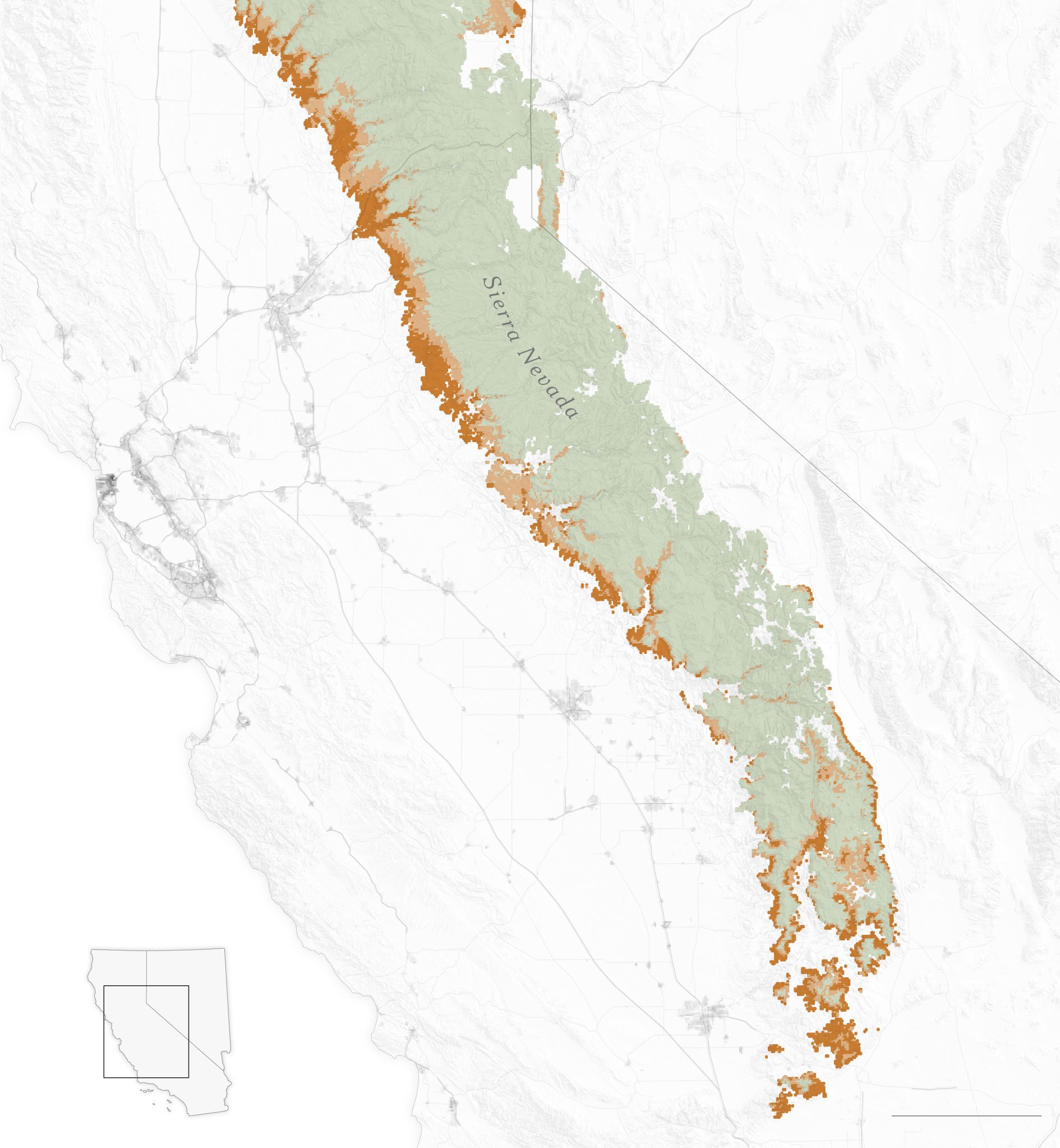FOREST CARBON MANAGEMENT & WILDFIRE MITIGATION
Mapping where California’s forests are out-of-sync with climate
Warming climatic conditions over the last century have led to observable shifts in the spatial organization of dominant tree species in California’s Sierra Nevada. Little is known, however, about the extent to which these shifts have tracked the magnitude of climate change. Hill et al., 2023 maps Vegetation Climate Mismatch in the Sierra Nevada—areas where climate change has left trees in climatic conditions where they have not historically occurred. Different vegetation types support different wildfire regimes, ecosystems, and ecosystem services. Our maps will be useful for anticipating vegetation transitions and informing long-term wildfire and ecosystem management across the Sierra Nevada mountains of California.
Source: The Global Ecology and Climate Solutions Lab at the Stanford Woods Institute for the Environment, using data from the U.S. Forest Service’s Wieslander Survey and Existing Vegetation maps.
Smoke from 2018 fires seen over California. NASA
Ecosystem impacts of wildfire smoke
Exacerbated by climate change, wildfire smoke is becoming a more common occurrence, especially across western North America. While we know that wildfire smoke has negative health impacts for humans, there is evidence that it could increase plant productivity. This occurs due to the way that smoke scatters incoming sunlight, allowing the sun's energy to reach further into dense plant canopies. We measured the impacts of wildfire smoke on vegetation productivity across a range of vegetation types, all with different canopy structures and physiological function, during the summer of 2018, an especially smoky year in the agriculturally productive Central Valley. We found that smoky conditions increased the efficiency by which the plant canopies photosynthesized, leading to productivity increases, depending on tradeoffs with total light and other pollutants. (See publications for link and news coverage.)
Wildfire fuel management and carbon sequestration
Source: Kyle Hemes
New work as part of the Center on Ecosystem Climate Solutions, a California Strategic Growth Council funded project, will focus on the tradeoff between wildfire fuel management and carbon sequestration in California’s forests.
Coffield et al., 2021 investigates the future biomass carrying capacity of California at the end of the decade, given projections of temperature and precipitation under a range of climate scenarios.


